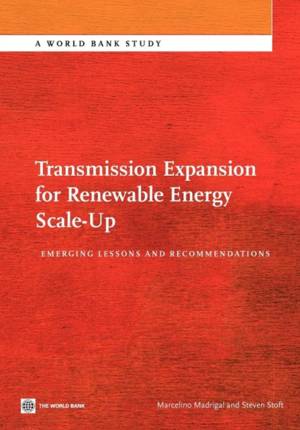
- Afhalen na 1 uur in een winkel met voorraad
- Gratis thuislevering in België vanaf € 30
- Ruim aanbod met 7 miljoen producten
- Afhalen na 1 uur in een winkel met voorraad
- Gratis thuislevering in België vanaf € 30
- Ruim aanbod met 7 miljoen producten
Zoeken
Transmission Expansion for Renewable Energy Scale-Up
Emerging Lessons and Recommendations
Marcelino Madrigal, Steven Stoft
€ 44,45
+ 88 punten
Omschrijving
In their efforts to increase the share of renewable in electricity grids to reducing emissions or increasing energy diversity, developed and developing countries are finding that a considerable scale-up of investments in transmission infrastructures will be necessary to achieve their goals. Renewable energy resources such as wind, solar, and hydro power, tend to be sited far from existing electricity grids and consumption centers. Achieving desired supply levels from these sources requires that networks be expanded to reach many sites and to ensuring the different supply variation patterns of renewable are combined with existing sources in the grid to ensure the constantly varying demand for electricity is always met.
Specificaties
Betrokkenen
- Auteur(s):
- Uitgeverij:
Inhoud
- Aantal bladzijden:
- 168
- Taal:
- Engels
- Reeks:
Eigenschappen
- Productcode (EAN):
- 9780821395981
- Verschijningsdatum:
- 22/06/2012
- Uitvoering:
- Paperback
- Formaat:
- Trade paperback (VS)
- Afmetingen:
- 178 mm x 254 mm
- Gewicht:
- 303 g

Alleen bij Standaard Boekhandel
+ 88 punten op je klantenkaart van Standaard Boekhandel
Beoordelingen
We publiceren alleen reviews die voldoen aan de voorwaarden voor reviews. Bekijk onze voorwaarden voor reviews.











